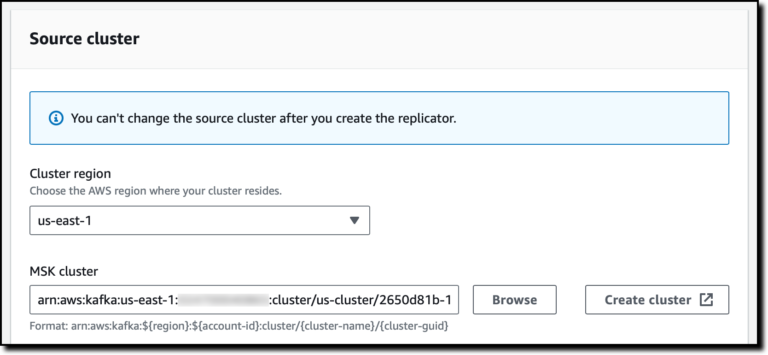In the fiercely competitive world of e-commerce, SEO is the key to unlocking success. Your product pages are the digital shop windows, and optimizing them for search engines is the secret to attracting customers and boosting sales. In this blog, we’ll explore how to optimize your e-commerce product pages for SEO, sharing actionable strategies for increased visibility and organic traffic. Let’s dive in and pave the way to e-commerce triumph through effective SEO techniques!
How SEO Works?
SEO, or Search Engine Optimization is the art and science of enhancing your website’s visibility on search engines like Google, Bing, and Yahoo. It involves a myriad of techniques, both on-page and off-page, designed to improve your website’s rankings in search engine results pages (SERPs). These techniques range from keyword optimization and content creation to backlink building and technical optimizations. The ultimate goal is to ensure that when potential customers search for products or services you offer, your website is prominently displayed, increasing the likelihood of their visit and purchase.
What Do E-commerce Product Pages Entail?
An e-commerce product page is a web page on an online store that provides information about a specific product. This information includes the product’s name, description, images, price, and other relevant details, such as size, color, and materials. Product pages also typically include a call to action, such as “Add to Cart” or “Buy Now.”
E-commerce product pages are essential, as they are the pages where potential customers learn about and purchase products. A well-designed product page can help to increase sales and improve the customer experience.
Why is SEO Important for E-commerce Product Pages?
Imagine having a stunning brick-and-mortar store hidden away in a remote alley. It doesn’t matter how amazing your products are, if customers can’t find you, you won’t make sales. The same holds true in the digital realm. Here’s why SEO is the lifeblood of e-commerce product pages:
1. Increased Visibility
SEO ensures that your product pages appear on the first page of search results, where users are most likely to click. The higher you rank, the more eyes you attract.
2. Targeted Traffic
Optimizing for relevant keywords ensures that the people landing on your product pages are actively looking for what you offer. This increases the chances of conversion.
3. Credibility
Users often see High-ranking pages as more trustworthy and credible. This trust can convert into sales.
4. Cost-Effective
Compared to paid advertising, SEO offers a cost-effective, sustainable way to drive organic traffic to your product pages over the long term.
Benefits of Optimizing Your E-commerce Product Pages
Now that we’ve established why SEO is crucial for e-commerce, let’s delve into the tangible benefits of optimizing your product pages:
1. Improved Ranking
Higher rankings lead to more clicks, more traffic, and more sales. It’s a simple equation.
2 Enhanced User Experience
SEO often involves optimizing page speed, mobile-friendliness, and overall usability. This translates into a better experience for your visitors, reducing bounce rates and encouraging longer stays.
3. Better Conversion Rates
When your product pages are optimized for both search engines and users, you’re more likely to convert visitors into paying customers.
4. Competitive Edge
By staying on top of SEO trends and techniques, you can outperform competitors and establish yourself as a leader in your niche.
5. Global Reach
SEO can help you expand your reach beyond borders, attracting international customers and opening up new markets.
10 SEO Best Practices for E-commerce Product Pages
Having a product page that works well on the internet is important for any online store. This page brings in the right people who are ready to buy.
Here are the 10 important things you should do for your product page to be great on the internet:
1. Use the Right Keywords
i. Do Your Research
Start by finding out what words people use when searching for your product. You can use tools like Ahrefs, SEMrush, or the free Google Keyword Planner. You can also learn from paid ads.
ii. Check the Stats
When you research, look at how often people search for a keyword, how tough it is to rank for it, and if it’s related to what you’re selling.
iii. Choose Buyer Keywords
To boost your product page’s SEO, use keywords that people ready to buy would use. These words show that someone wants to make a purchase. Longer, specific keywords like “cheap web hosting company” can help your page show up first when people search for it. Before using a keyword, make sure it matches what people are looking for based on how often it’s searched.
2. Titles and Meta Descriptions for E-commerce Product Pages
When people search for a product online, the first things they see are the title and description on the search results page. So, it’s crucial to make them good. Here’s what you should include:
i. Product Name
Put the name of your product in the title and description. It’s the most important thing.
ii. Product Model
If your product has a model or version, mention it in the title or description.
iii. Brand Name
Include your brand name so people know it’s your product.
iv. Product Description
Write a short description of what makes your product special. What’s unique about it?
v. AR/AI Features
If your online store has cool features that let customers try products or see them in real life using Augmented Reality (AR) or Artificial Intelligence (AI), mention them. It’s a big plus for customers.
3. Using Structured Data for Better E-commerce Product Pages SEO
Structured data is like organizing your room so everything has its place. It helps Google understand your product page better and show it, especially on the search results page.
Here’s what you need to know:
i. Structured Data Definition
Structured data is organized information. It tells Google about your product page and helps it show your page in a fancy way on the search results.
ii. Creating Structured Data
It’s like creating a secret code for Google. Just like HTML organizes what’s on your web page, structured data organizes information for Google. You can learn more about this online or check out other tips for getting your online store to the top in 2023.
iii. Importance of Product Page SEO
To make your product page look good and organized on Google, you need to make sure the information is well-structured and easy for Google to understand.
4. Boosting Your E-commerce Product Pages with FAQs
To make your product pages good, you should:
i. Quality Content
Good online stores have product pages that tell you a lot about the stuff they’re selling. This helps them show up on Google. So, make sure your page has great info that customers want.
ii. Add FAQs
People often have questions when they’re shopping online. That’s why you should put a Frequently Asked Questions (FAQ) section on your product page.
iii. Why FAQs Matter
FAQs help your customers. If they have questions and find answers on your page, they’re more likely to buy. If they don’t get answers, they might leave without buying.
iv. FAQ Section Tips
Your FAQ section should answer all the questions customers might have. And, don’t forget to use FAQ structured data to make it easy for Google to understand.
When people look for stuff to buy on the internet, you want them to choose your online store, right? To make that happen, you need to stand out. Here’s how:
i. Be Unique
Your product descriptions and the short descriptions (Meta descriptions) on Google should be special. Don’t be like everyone else.
ii. Why It Matters
If your descriptions are just like everyone else’s, people won’t notice your products. You’ll miss out on chances to get more customers.
iii. Don’t Copy
Each of your products is different, so don’t use the same words for all of them. Use different descriptions that show why each product is cool.
iv. Google Searches
Your products can show up on Google for different types of searches. Use this by writing unique Meta descriptions for each product on your online store.
6. Increase Sales with Customer Reviews
To sell more, show what your happy customers say:
i. Why Reviews Matter
When people see good reviews on your site, it helps them decide to buy. Happy customers can convince others.
ii. Get a Review Section
Make sure your product page has a place for customers to leave reviews.
iii. The Power of Reviews
Did you know, 58% more people buy from product pages with reviews? So, ask customers for feedback and let them share their experiences.
iv. Use Review Schema
Mark the reviews with a special code called “review schema.” It helps Google understand and show them.
v. Fresh Content
Reviews keep your product page fresh and interesting. This can make Google like your page more and help it rank higher.
7. Improving Conversions with Landing Page Testing
Testing your pages helps find what makes people buy more from your online store.
To sell more, try these steps:
i. Test Landing Pages
Experiment with your landing pages to make them better. Small changes can boost sales.
ii. What to Test
Try moving or changing the “Buy Now” button or the words you use. You can even change how your website looks.
iii. Measure Impact
See how each change affects sales and the buying process.
iv. Use Tools
Tools like Optimizely and Google Optimize help you test even tiny changes on your product pages.

8. Utilize Excellent Videos and Images
To sell things online, you need to show them well:
i. Why Good Images Matter
When people shop online, they can’t touch stuff like in a store. So, having really good pictures and videos helps them decide to buy.
ii. Quality Is Key
Use high-quality images and videos. They make your products look great and help customers trust what they’re buying.
iii. Show Special Stuff
Use images to highlight special things about your products, like unique packaging or what’s inside the package.
iv. Great User Experience
Good pictures and videos make your online store a better experience for customers, helping them make confident choices.
9. Speed up Your Website for Happier Customers
To make your online store better, you need to make it load faster. If it’s slow, your customers might leave, even if your product pages look great.
Here’s what you should do:
i. Why Speed Matters
People don’t like waiting for pages to load. If your site is slow, you’re only halfway there with your SEO.
ii. Find the Slowness
Figure out what’s making your website slow. This is the first step to making it faster.
iii. Why Speed Helps
A super-fast website makes shopping online easy and smooth. Customers who already know what they want don’t want to wait to buy it.
iv. Get More Sales
Speeding up your product pages can boost how much money you make and how long people stay on your site, checking out more stuff.
10. Check and Fix Technical Issues for Better Product Pages
To improve your product pages, pay attention to these technical things:
i. Faceted URLs Can Be a Problem
If your website has lots of different URLs for filtered searches, it can cause issues. This might waste your site’s “crawl budget,” cause link problems, and create duplicate content.
ii. Optimize Crawl Budget
Use SEO tools to make your site easier for search engines to understand and rank better.
iii. Audit Your Product Pages
Check your product pages for problems. Look out for slow loading, missing structured data, duplicated titles and descriptions, not enough content, broken links, and errors like 302 redirects or 404 pages.
iv. Fix the Issues
After you’ve checked, fix any problems you find. This helps your product pages work better and show up higher in search results.
Common E-commerce Product Pages SEO Mistakes to Avoid
Let’s talk about some SEO mistakes you should steer clear of when working on your e-commerce product pages:
1. Using Automated Optimization
It’s not a good idea to stuff your product pages with just the product and brand names. This often happens when people use automated tools for SEO on product pages.
- Instead, focus on adding important and relevant details to your titles. This will help your e-commerce site rank better for the keywords you’re targeting.
- Automated titles and descriptions can make your site look lazy and unprofessional. They lack uniqueness and might even make fewer people click on your page or buy your products.
2. Using the Wrong Structured Data
Structured data is like a special language that helps Google understand your website better. When Google gets it right, your website can show up in special search results and get more visitors, which means more sales.
But here’s the thing: some folks either don’t use structured data at all or they use the wrong kind.
If you use the wrong structured data, Google might not show those special results for your online store. Google doesn’t like this because it means the information isn’t right, and that makes search results less helpful.
So, it’s important to use the right structured data to make your online shop look good on Google and get more customers.
3. Not Using Clear Call-to-Actions
It’s a mistake to either not use or use weak “calls-to-action” (CTAs) when you’re working on making your product pages better for your online store.
Here’s why it matters: When someone visits your product page, they should know what to do next. If it’s not clear, they might leave and go to another store because they don’t know how to buy from you.
Using strong CTAs in the right places is like giving your customers a map for their online shopping journey. Your goal is to help them go from looking at your products to actually buying them, all the way to the “thank you” page on your website.
4. Using Links to Boost Your Product Pages
To make your online store pages better, you should use two types of links:
- Internal Links
These are like roads on your website that help customers find their way around. When you use them on your product pages, it can help your page show up better on Google. This can bring more people to your store and help you sell more.
These are like other websites giving your website a thumbs-up. When you get good links from other websites, it tells Google that your website is important and trustworthy. So, it’s not just your main page or category page that should get links; your product pages need them too.
Also, don’t forget to use longer and more specific keywords for your product pages to get even more people interested in what you’re selling.
5. Keeping Out of Stock E-commerce Product Pages
When a product is sold out, don’t delete the page where it was listed on your online store, even if it had a good rank and lots of visitors.
Here’s why: Instead of removing it, you can use it to your advantage. You can link it to other products that are similar or related. This way, the people who visit that page might check out other things and make a purchase. It keeps the money coming in even when that one product is gone!
You can also ask customers for their email addresses, so you can tell them when the product is back in stock. This can help you sell more when it’s available again. And it’s a good idea to run a checklist to make sure your online store is working well.
Conclusion
In conclusion, SEO is the cornerstone of success for e-commerce product pages. It’s not merely a marketing strategy; it’s a business imperative. Investing time and effort into optimizing your product pages for SEO will unlock the potential for increased visibility, credibility, and profitability, setting your e-commerce venture on the path to enduring success. So, don’t just sell products—optimize, excel, and watch your online store thrive!
In case you have found a mistake in the text, please send a message to the author by selecting the mistake and pressing Ctrl-Enter.






